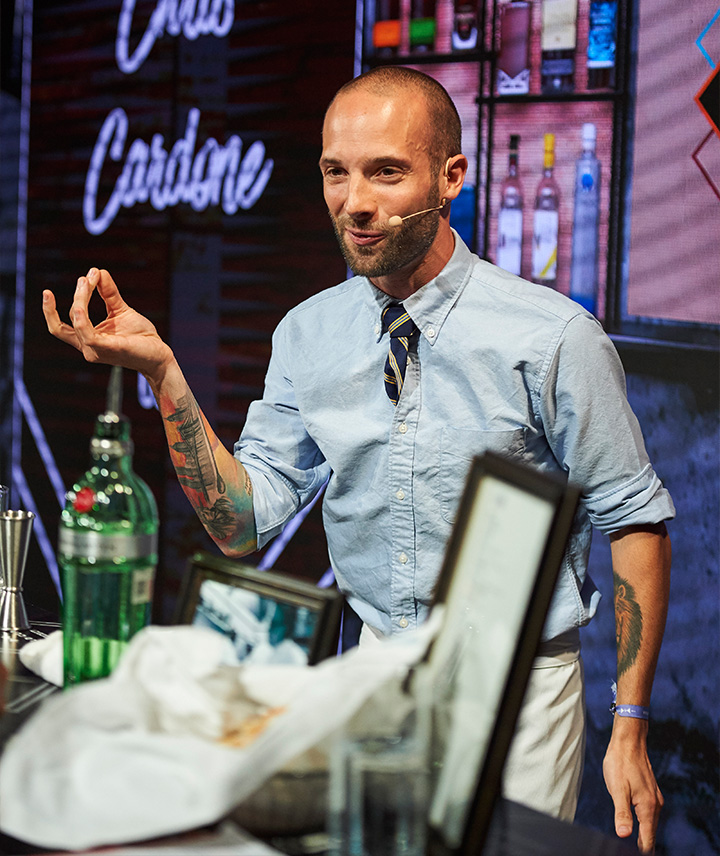There’s way more to Cinco de Mayo than tacos and margaritas. Chris Cardone, 2017 World Class US Bartender of the Year, takes us through the rich history of Cinco de Mayo and the meaning behind the celebration.
The History of Cinco de Mayo
Cinco de Mayo

Cinco de Mayo
Cinco de Mayo is a chance to raise cultural awareness, build communal harmony and celebrate Mexican history. The 5th of May is about the resilience and strength the Mexican identity possesses. It’s about commemorating those who persevered in the past. It’s about recognizing a community that has remained and thrived. Cinco de Mayo isn’t just a celebration of tacos, margaritas, and sombreros with a side of chips and guacamole.
Surprising as it is, many Americans do not know the importance of the holiday, and many mistake it for Mexican Independence Day or Día de la Independencia. (The latter holiday was proclaimed on September 16, 1810, about 50 years earlier than the first Cinco de Mayo.) Cinco de Mayo celebrates a heroic and grand military victory.
The story begins when Benito Juárez, a lawyer and member of Mexico's indigenous Zapotec tribe, was elected president of Mexico in 1861. After years of internal warfare, the country was in a financial disaster, and the new president was obliged to default on debt payments to European governments. In retaliation, France, the United Kingdom, and Spain sent naval forces to Veracruz, Mexico, to demand compensation. The UK and Spain reached an agreement with Mexico and withdrew their soldiers. The French navy refused to settle and instead invaded Veracruz under General Charles Latrille de Lorencez in late 1861, landing a vast army of troops and forcing President Juárez and his government to retreat
On May 5, 1862, 6,000 French forces besieged the small east-central Mexican city of Puebla de Los Angeles. French Emperor Napoleon III wanted to seize control of the Mexican territory. However, the 2,000 outnumbered, insufficiently armed Mexican soldiers under the command of General Ignacio Zaragoza battled valiantly and strategically. The combat lasted from dawn to early evening, and the overwhelming number of French casualties forced the French to flee. Mexico's President Benito Juárez and the government of Veracruz honored this victorious day by declaring May the 5th a national holiday a few days later.
Cinco de Mayo, also known as the Battle of Puebla Day is celebrated principally in the state of Puebla, where General Ignacio Zaragoza’s remarkable triumph happened, although some other regions of the country also choose to participate. The Battle of Puebla is commemorated with a museum in the present-day city, which was eventually renamed in 1950, by ordinance of the state congress, receiving the title of Heroica Puebla de Zaragoza. The battlefield itself, an important historical landmark, is preserved as a park.
Cinco de Mayo in the United States
Cinco de Mayo is also extensively celebrated in the United States as a salute to Mexican culture and heritage. Some of the most well-known and historically respectful ceremonies in the United States take place where there is a vast Mexican-American demographic such as in Chicago, Houston, and Los Angeles.
Chicano militants popularized the event in the 1960s, partly because they connected with Indigenous Mexicans' triumph over European invaders during the Battle of Puebla. This defeat was extremely vital as well as pivotal for the Mexican government. It symbolized their perseverance to withstand foreign domination and encouraged the resistance movement. On this holiday, traditions such as military parades, speeches, re-creations of the battle, mariachi music, Mexican folk dancing, traditional foods, and other festive activities are celebrated amongst the people to honor those who fought on the 5th of May.
Now that we all understand the importance of Cinco de Mayo and its rich history, we should honor the Mexican holiday by spreading awareness, as well as creating, enjoying, and sharing a culturally appropriate communal gathering of food, drinks, history, and remembrance. The cocktails I’ve created are based on quintessential combinations found in traditional Mexican cocktails and food pairings.
The first cocktail I will introduce echoes the flavors in the national drink of Mexico. The traditional Paloma has bright notes of grapefruit and lime citrus and a tickle of carbonation. This inspired a more multidimensional representation in which I added a grassy and vegetal quality with an aloe liquor and a hint of smokey mezcal. These flavor additions dance across the palette while keeping the delightfully refreshing feel of the classic libation.
The second cocktail creation draws from common flavor ingredients in Mexican cuisine. Utilizing the barrel notes of Don Julio Reposado, the rich dried fruit flavors found in ancho chili liqueur as well as mango purée, the second cocktail is a twist on a margarita. The sour, sweet, and spicy notes work together to create a perfectly balanced cocktail.
ENSUEÑO EN OAXACA
Immerse yourself in the captivating flavors of Ensueño en Oaxaca, a masterful blend of balanced flavors that will delight your senses and transport you to the heart of Oaxaca with every sip.

RASPADO
Indulge in the vibrant allure of a Raspado - shaken to perfection and fine-strained, this enticing concoction delivers a balanced symphony of flavors. Crowned with a touch of cayenne powder, it's a sensory journey that ignites the senses.

